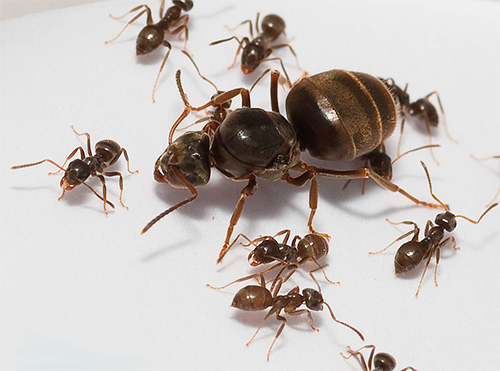
The whole life of a colony of domestic ants revolves around the uterus. She does not get food, does not protect the anthill, does not remove garbage. But it is the queen ant of domestic ants that lays eggs and ensures the constant replenishment of the family with new members.
The ability of the colony to survive and the spread of the whole species depends on its well-being. Therefore, the uterus of the domestic ant is the main unit of this species.
On a note
The scientific name for the house ant is the pharaoh ant. In what follows, we will occasionally use this term.
Interestingly, the relationships of the queen with other members of the colony in pharaoh ants are somewhat different from those in other species. Perhaps that is why house ants managed to spread around the world faster and more completely than their other relatives.
The uterus of a domestic ant: photos, description, body structure
The uterus of domestic ants is approximately twice as large as working individuals and reaches a length of 4-4.5 mm. Its body color is dark brown with well-marked red thin bands on the back of the abdomen. In the photo below, these insect color elements are clearly visible:
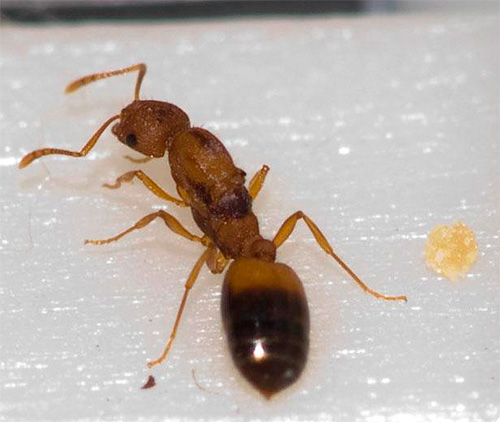

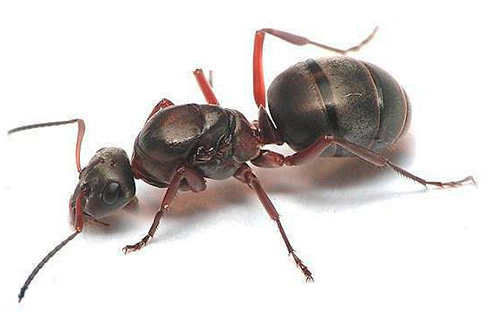
In general, the uterus of a domestic ant does not look like just a copy of a worker.Its abdomen is much larger in relation to the main body, and in general it is more massive and less mobile.
The most characteristic difference between the uterus and the worker ant is the enlarged chest (the second segment of the body behind the head). In working individuals, the chest is very small and does not exceed the size of the head itself.
The uterus, which has already founded a colony, does not have wings. In the anthill itself, young females, ready for fertilization, are winged and hardly distinguishable from males. At the same time, they do not particularly need their light long wings: pharaoh ants do not have a flight.
The photo below shows several winged females:
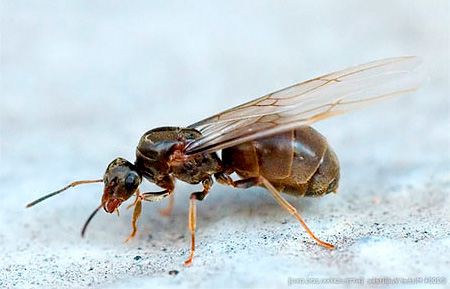

On a note
All workers in the nest of domestic ants are females, incapable of reproduction. Therefore, the question “what does a female domestic ant look like” hardly makes sense.
In other species of ants, the female is called the queen from the moment she leaves the colony and establishes her own. In domestic ants, the uterus does not create a separate colony, and this is the whole difficulty in the fight against these pests.
In the photo below - the uterus of a domestic ant surrounded by working individuals:
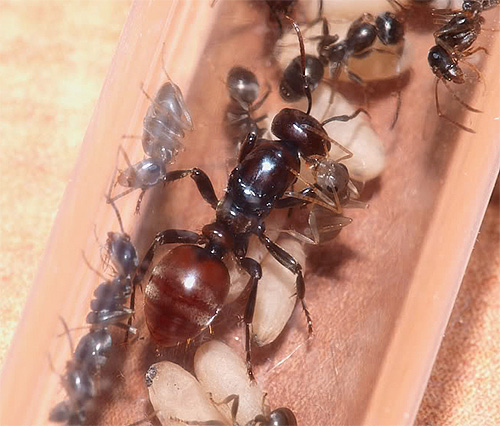
A bit of biology: how the uterus lives and what it eats
Most ants in the anthill once a year from the pupae appear a large number of females and males capable of breeding, which mate during the so-called flight. After that, fertilized females no longer return to their native colony, but spread around the neighborhood and try to find places where they can lay their first eggs and raise working individuals.
Immediately after the summer, the female gnaws off her wings, receiving additional nutrients to organize a new settlement.
In house ants, this process looks different. They have males present in the colony in small numbers all the time. The worker ants feed them, but generally treat them "not very respectfully", almost like mere cans of seed.
It is interesting
In a colony of domestic ants, only 10-15% of individuals search for food and leave the anthill. The rest of the workers are busy serving the female and caring for the offspring. So those insects that you sometimes see, for example, in the kitchen, are only a small part of the huge number of them that develop somewhere near the house ...
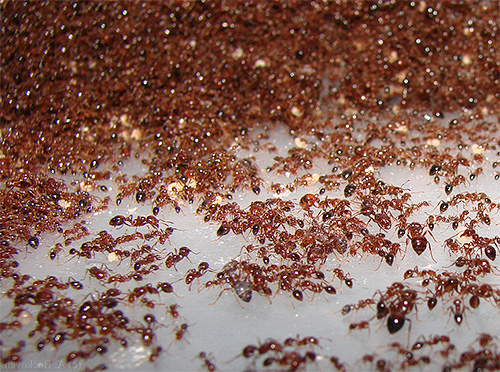
Able to breed females appear in the colony when it reaches a certain size. They are fertilized by males and remain to live and breed here. So in a colony of domestic ants, several hundred queens can live. They show no hostility towards each other.
It is interesting
Experts believe that with a small number of ants in the colony, the uterus sprays the eggs with special pheromones that block the sexual development of ants. Worker ants are hatched from such processed eggs. When the colony becomes too large, the queen simply does not have enough pheromones, and untreated eggs develop normally. So nature provided for the development of the labor force at the very start of the development of the anthill and the possibility of its growth - upon reaching a certain size.
When the ants become crowded in one anthill, some of them move to neighboring convenient places. At the same time, a new anthill is not formed: a strong connection is maintained between the "metropolis" and the "colonies", the queens can move from one nest to another, the ants exchange food.
Thus, a super anthill is formed in a large number of autonomous formations. Destroying it is extremely difficult: for this you need to find all the nests and kill all the queens in them.
The photo below shows the ant queen of domestic ants near the eggs:
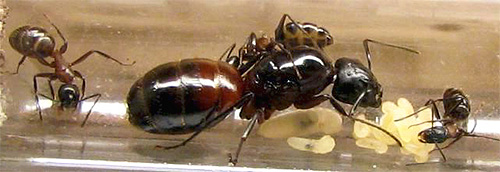
The queen ant lives up to 12-15 years, laying more than 500,000 eggs in her life. The worker ants feed it with the food they bring or with their burps.
Due to the large number of breeding queens in the colony, the worker ants are not especially respectful of each of them, even the one that establishes the colony: they move the queens from nest to nest, and may even kill one that lays too few eggs. This explains the high breeding efficiency of domestic ants.
Reproduction and dispersal of domestic ants: the role of the queen in the spectacle of life
By and large, in a very pragmatic colony of domestic ants, the queen acts as a kind of egg conveyor. The attitude of worker ants towards her can be compared with the attitude of a farmer towards his cow: they love her, take care of her, but in case of death, there are always several young ones in reserve, and disaster will not happen.

Pharaoh ant colonies may divide to form a new colony. In this case, several queens and several hundred worker ants move to a separate, usually already prepared place for a new colony.
Representatives of one colony do not show hostility towards their neighbors. However, such a set of colonies should be distinguished from a diffuse anthill distributed over areas that are huge by ant standards.
It is interesting
The largest pharaoh ant colony studied to date had 340,000 workers. The usual population of an anthill is 10-15 thousand individuals. The minimum required for a colony to restore its numbers after a disaster is a few dozen ants.
Today, the very phenomenon of ant wombs and their division into castes attracts the attention of a huge number of scientists, from behavioral ethologists to evolutionists. It is believed that it was this hierarchy in the ant colony that allowed them to become the most developed, numerous and resistant to natural disasters group of insects on the planet.
In the activity of an anthill, there are a lot of similarities with the activity of a rational being, but at the same time, it is impossible to draw an analogy of the uterus with some organ in the human body. The anthill is a special kind of organism, and the uterus in it is the root cause and the main reproductive component. And the specific position of the uterus in domestic ants allowed them to become the most common type of ants on the planet.


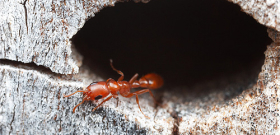

Many thanks for the interesting article.
Very informative!
Thanks for the article! God bless you for your work!